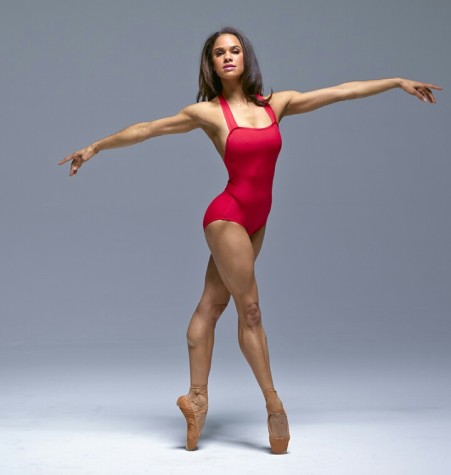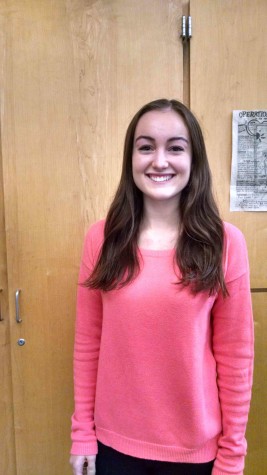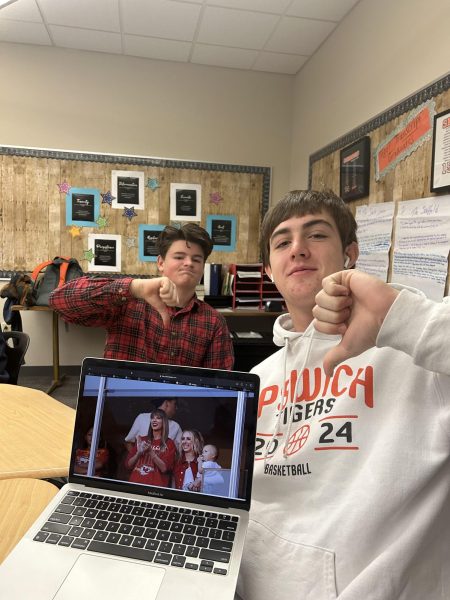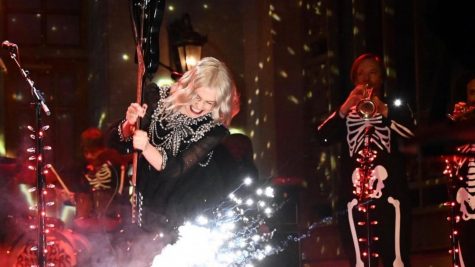Misty Copeland On “Pointe”
October 14, 2015

Think back to your young, three year old self. What would you most likely be doing? Probably waddling around, still learning how to use the toilet and talk. There was probably a good deal of crying and tantrums still happening at that age. At the age you were whining and misbehaving, most ballet dancers were in their first dance class. They were perfecting their posture and poise, quietly absorbing every word from their teacher.
In the world of professional ballet, dancers often begin around the age of three. Most ballet companies don’t hire many dancers who have started later. That is unless you are the American Ballet Theatre (ABT) the home of no other than Misty Copeland.
Copeland’s story is an unlikely one, and she has defied all the odds to become the principal dancer of the ABT. Like you and me, Misty Copeland was still learning to walk and talk at the age of three. She was not in a ballet class.
I asked IHS students to define a ballerina for me. The results, well, weren’t too surprising. “Well all the ones I’ve seen are blonde, tall, and wafer thin. Don’t they start at the age of two or something?”, said senior Shannon Haliday. History teacher Scott Ames remarked, “They seem athletic, yet extremely thin”. Seniors Liam Sullivan, Peter Pappas, and Christian Collum were in agreement that ballerinas are “small”, “petite”, and “skinny” . All these responses are relatively the same, and honestly, they tend to be true. If you look at many of the principal dancers in world renowned ballet companies, most fit the descriptions given by my classmates.
Misty Copeland shatters all these perceptions of a ballerina. She is short, curvaceous, muscular, and black. She started dance at the age of thirteen, fought through several crippling injuries, and yet to this day Copeland is a dazzling inspiration for millions of young dancers.
Born in Los Angeles California, young Misty Copeland always showed a strong love of dance. She could often be found dancing in front of her television to the latest Madonna song. At the age of thirteen, she choreographed a routine to try out for her school’s drill team. She was made captain and was encouraged by her coach to start taking dance lessons at a local boys and girls club. Thus, a legend was born.
Copeland was a natural talent. She worked hard to complete seventeen year’s worth of training in just a four year time frame. Just a mere two years after her late start, Copeland attended the San Francisco Ballet summer intensive program on a full scholarship. A few years later, she was accepted to the American Ballet Theatre summer intensive program and moved to New York to start her journey.
During the first few years of her career in New York, Copeland faced setbacks. At the age of eighteen she had not yet begun to menstruate and was put on birth control to induce puberty. Over the course of a few months, her body began to fill out and grow curves she had never had in her youth. According to the “New Yorker”, Misty was quickly told by critics that she needed to “lengthen” which is ballerina talk for lose weight. Misty was appalled. Rather than give in, she found ways to fight through the judgement and continue her work in dance. To this day Copeland is a muscular, curvy woman who continues to preach positive body image.
Shortly after her move to New York, severe stress fractures in her shin caused her to stop dance for a while and undergo surgery. Along with this, Copeland was diagnosed with a vertebral fracture. She was put in a brace for twenty three hours of the day, losing about a year of training (NY Post). Ordinarily it is injuries such as these that attribute to the short time frame of a ballerina’s career, which normally ends in the mid twenties. Once again, Copeland has defied the odds and is still going strong at the age of thirty. Finally, after having everything stacked against her in every way possible, Copeland was able to receive the most prestigious title in dance: the principal dancer. This is the lead dancer of a ballet company, the dancer who is entrusted with some of the most daunting leads. According to the “New Yorker”, she is now working on “The Nutcracker” and “The Firebird Suite”.

“She is an Inspiration” says dancer Alison Nunziato. “ I have been dancing since I was five, and I can never imagine being as good as her. I hope young dancers, or even older ones look to her as a role model”. Alison also remarked that “I actually have a really bad foot injury from dance; it hurts every time I walk. To think that she danced through the pain in her shin? I can’t imagine it”. Copeland has defied all the odds, and she is a shining light for young dancers, a hope that one day their dreams may come true as well.
Despite her late start, despite the critics and haters, despite her injuries, Misty Copeland has triumphed. She shows that no matter what, follow your dreams. Anything is possible if you want it enough. Copeland shows that you don’t have to be blonde, thin, or blue eyed to be a ballerina. Even for those who have no desire to pursue a career in dance, Copeland’s story shows that you don’t have to fit the mold of society to succeed, you make society shape itself around you.





Lisa Ellrott • Oct 23, 2015 at 8:48 pm
I enjoyed this piece very much! Copeland is indeed a revolutionary and an inspiration. I would love to see her perform one day.
Lisa Ellrott